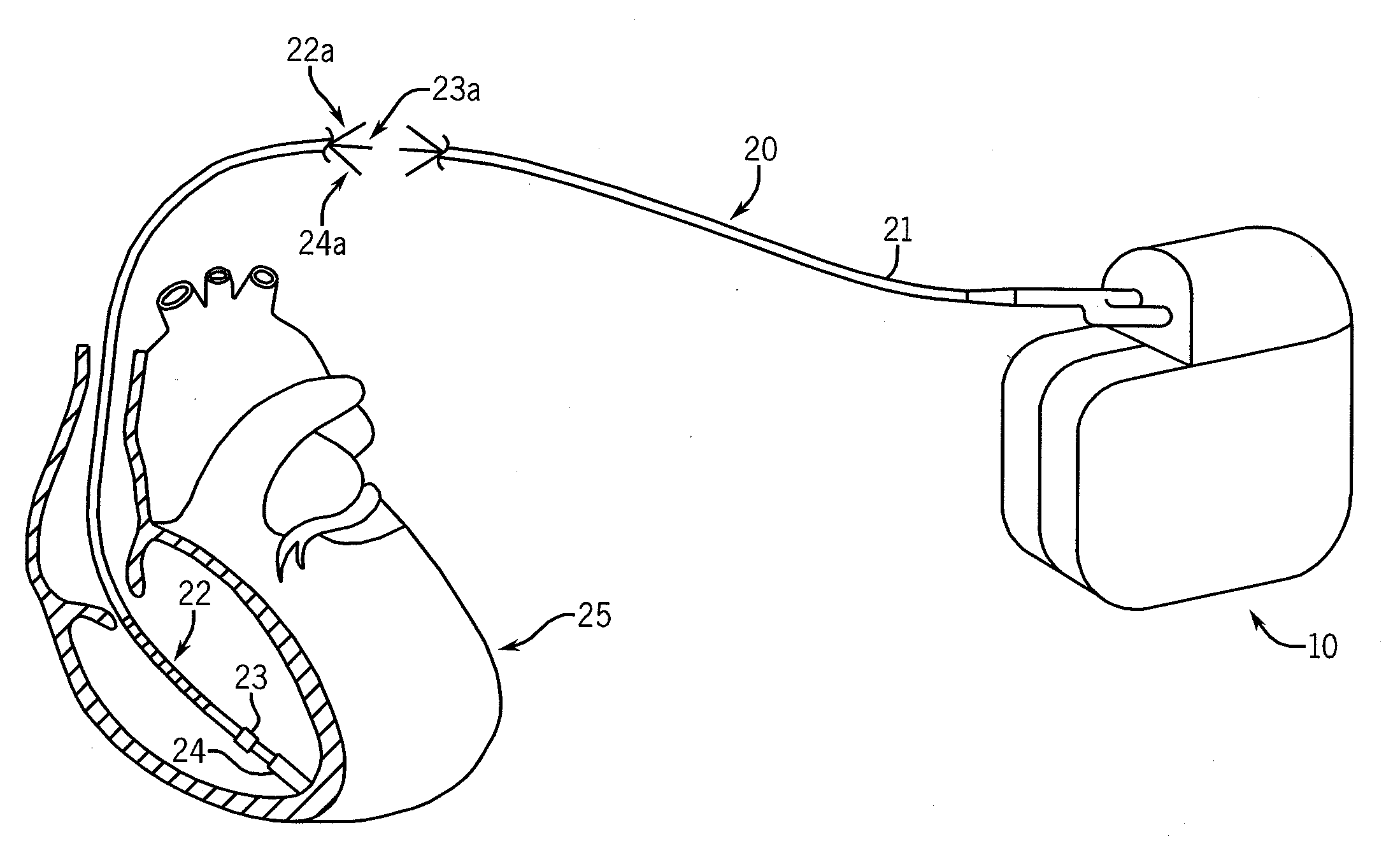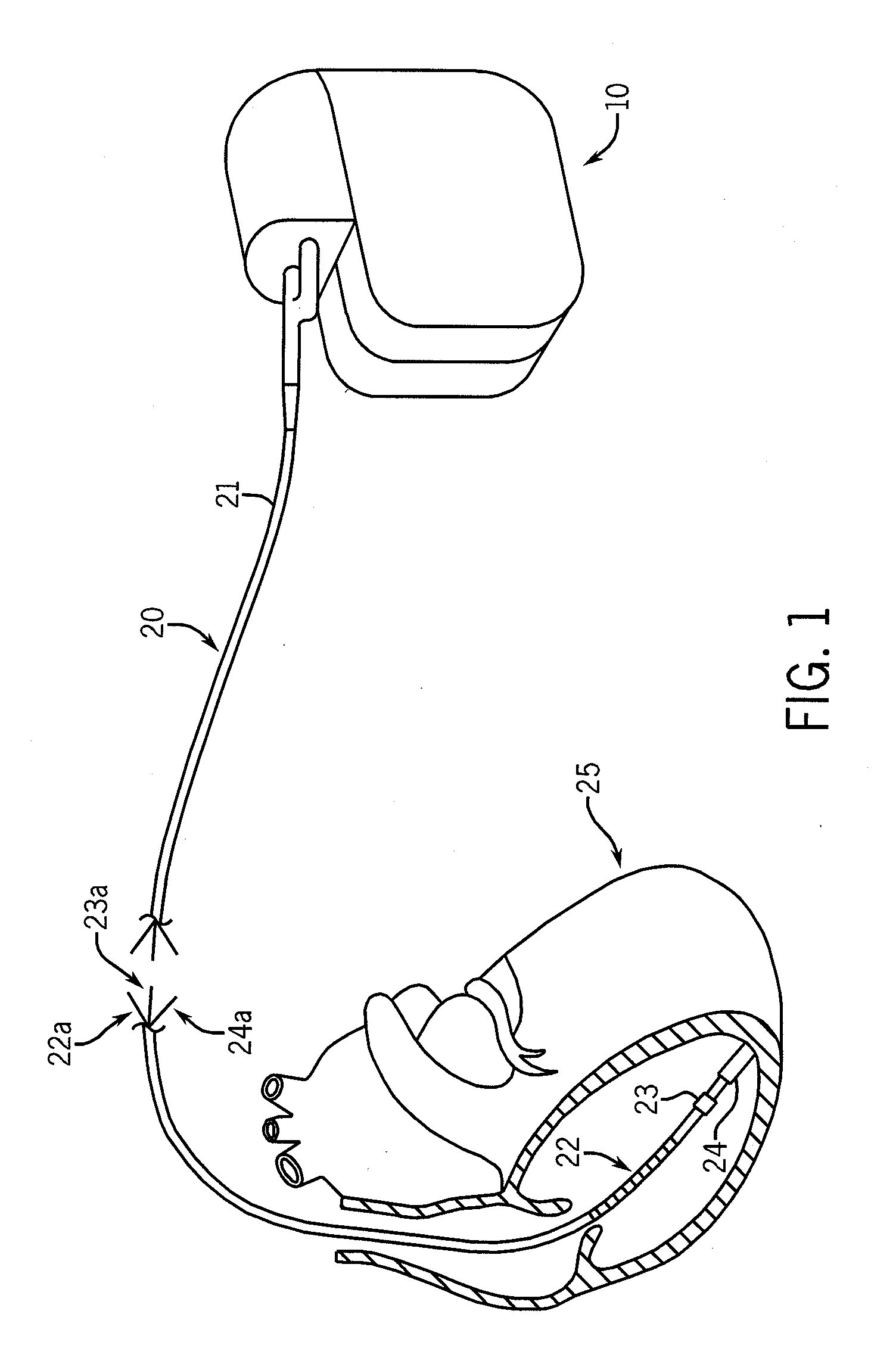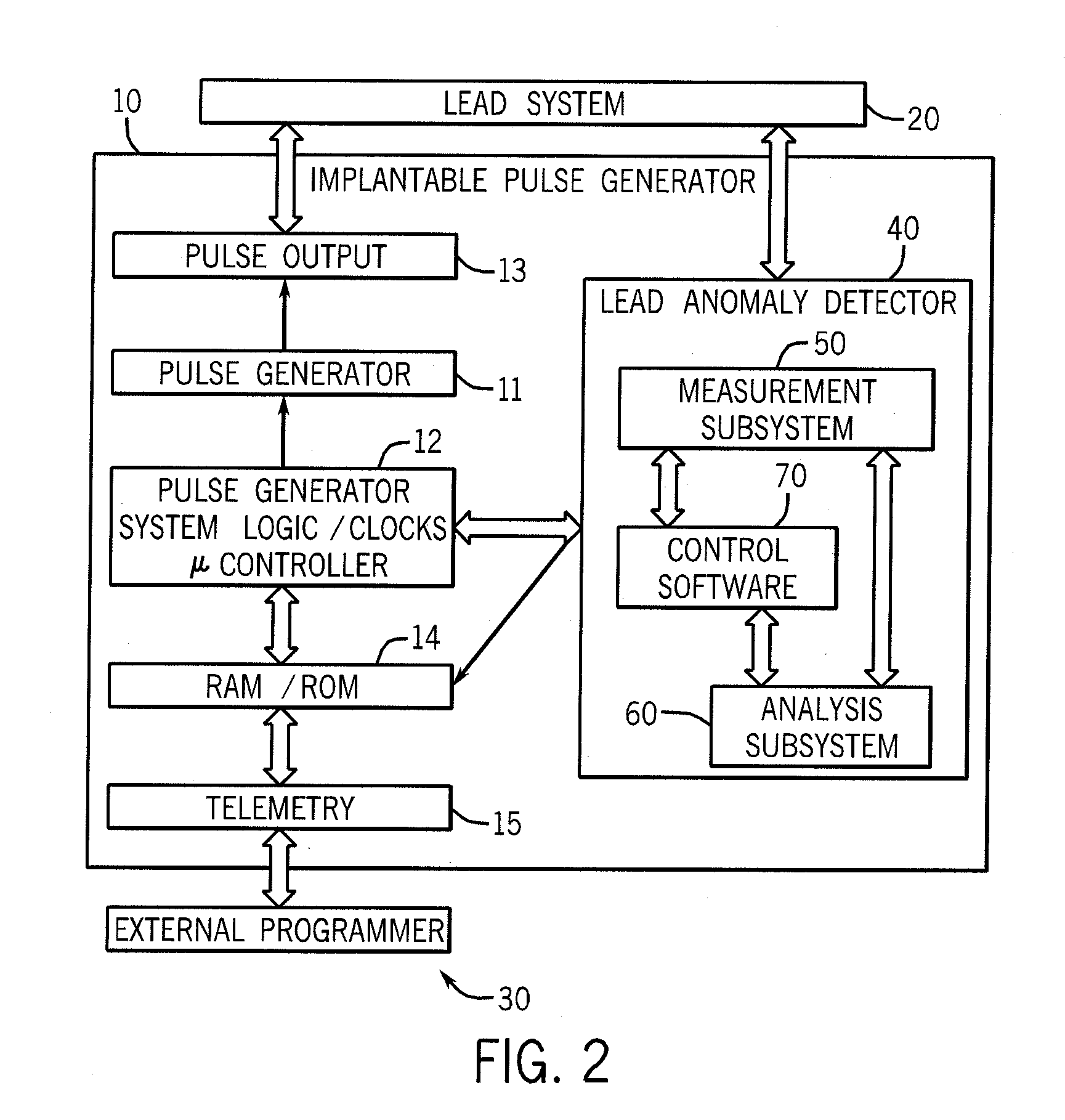Method and apparatus for detection of lead conductor anomalies using dynamic electrical parameters
a dynamic electrical parameter and conductor technology, applied in the field of scientific and medical systems, apparatus and methods, can solve the problems of unnecessary lead replacement, corresponding expense and risk, and the existing technology for diagnosing conductor anomalies in implantable medical devices is believed to have significant limitations and shortcomings
- Summary
- Abstract
- Description
- Claims
- Application Information
AI Technical Summary
Benefits of technology
Problems solved by technology
Method used
Image
Examples
second embodiment
[0063]the testing process is based on the effect of capacitive and inductive circuit elements on the response to a transient input (“impulse”) function. If the test signal is an impulse function, it is well known in the art that the voltage response of a series RLC circuit is given by:
v(t)=21LCexp(-R2Lt)cos{ωt+tan-1(2ωLR)}
[0064]where ω is now the natural resonance angular frequency given by:
ω=1LC-(R2L)2
As shown in the middle and lower panels of FIG. 5, the equivalent circuit has both series and parallel elements. However, these basic principles apply generally: A pure resistive circuit does not distort the input signal. Addition of a capacitive element prolongs the duration of the output signal before it reaches a predetermined fraction of the initial value. Addition of inductance results in an oscillatory response. As inductance increases, the frequency of the oscillations increases. Hence there is a decrease in the interval between baseline crossings and increase in the number of ...
third embodiment
[0066]the testing process is based on the effect of capacitive and inductive circuit elements on the response to an input signal of finite, known duration. For example, if a rectangular pulse with a fixed voltage is applied to a circuit containing only a resistor, the current in the circuit reaches its maximum value immediately. But if the circuit contains inductance and capacitance, the measured current increases gradually over time, reaching a maximum value at the end of the pulse. The time course of the current increase may be used to identify the magnitude of capacitive and inductive circuit elements. The actual measured current may be sampled frequently or continuously, or at only a few points, such as a predetermined fraction of the pulse duration and the end of the pulse.
[0067]The present method has specific advantages over methods now in use. The currently-used resistance measurement remains within the normal range if only part of the conductor is intact and is thus insensit...
PUM
 Login to View More
Login to View More Abstract
Description
Claims
Application Information
 Login to View More
Login to View More - R&D
- Intellectual Property
- Life Sciences
- Materials
- Tech Scout
- Unparalleled Data Quality
- Higher Quality Content
- 60% Fewer Hallucinations
Browse by: Latest US Patents, China's latest patents, Technical Efficacy Thesaurus, Application Domain, Technology Topic, Popular Technical Reports.
© 2025 PatSnap. All rights reserved.Legal|Privacy policy|Modern Slavery Act Transparency Statement|Sitemap|About US| Contact US: help@patsnap.com



